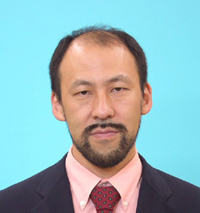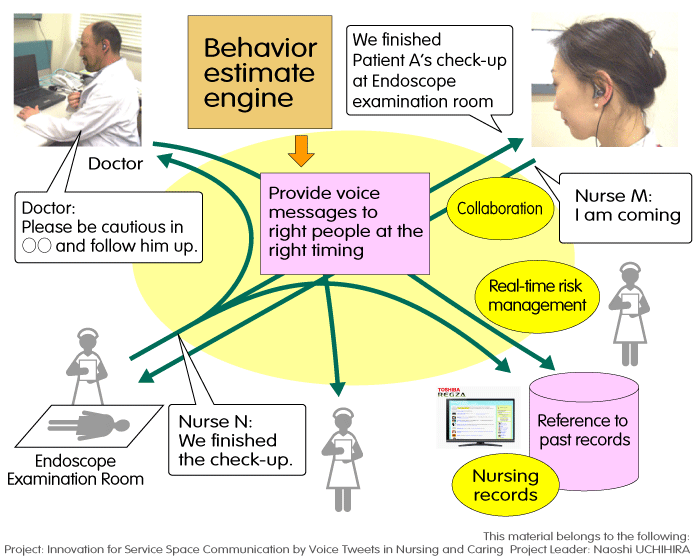Research Projects Selected in FY2010
< Solution-Oriented Service Science Research, Type A >
Innovation for Service Space Communication by Voice Tweets in Nursing and Caring

[] Project Leader
Naoshi UCHIHIRA
Senior Fellow, Corporate R&D Center, Toshiba Corporation
[] Targets
- Development of space-time communication technology towards behavioral services with low occupational and psychological burden
- Implementation of system improvement cycles using burden evaluation techniques and assistance space design methodologies
[] Approaches
- Hands-free interaction for behavioral services through the fusion of voice and murmuring
- Behavioral service design methodology combining the fields of service technology development (information science), field trials at nursing and care facilities (health and welfare), and service evaluation (social science)
The aim of this research is to achieve innovation in communication using voice technology in the field of healthcare services. We seek to develop new communication between nurses or doctors by achieving Twitter-like quasi-real-time hands-free voice communication.
In recent years, voice intercom (transceivers) has been introduced in many hospitals. Using this method, voice messages are shared throughout the entire workplace and are not stored. In this research, technology was implemented that stores voice messages on a server and automatically delivers them to the right person at the right time. For example, if a nurse in the endoscopy room murmurs “Test finished”, the situation is inferred using speech recognition, locational information and schedule information, and the information is sent only to the nurse in charge of the ward who needs it (space communication). Also, if nurses leave voice messages about something they notice on their rounds, the messages can be used when preparing the nursing record or when switching shifts (time communication).
With the transition to a period when voice recognition technology will make dramatic improvements, a new type of communication using murmured utterances holds out the possibility of substantial improvement in the efficiency of behavioral healthcare services.





